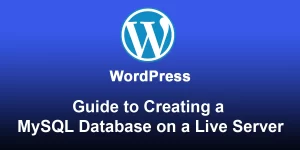Mastering Database Dynamics: Running Database Queries in WordPress with wpdb Class

WordPress, as a powerful content management system, relies heavily on its database to store and retrieve information. Whether you’re a developer looking to interact with the database or a site owner trying to optimize your WordPress site, understanding how to run database queries is essential. In this guide, we’ll explore the wpdb class and delve into the world of custom queries.
Introduction to wpdb Class
The wpdb class is a WordPress database access abstraction layer. It provides a set of functions to interact with the database without having to write raw SQL queries. This abstraction layer ensures that your code remains compatible with different database systems supported by WordPress.
Establishing a Connection
Before executing queries, you need to establish a connection to the WordPress database using the wpdb class. Here’s how you can do it:
// Include WordPress database access file
include_once(ABSPATH . 'wp-config.php');
// Create a new instance of the wpdb class
$wpdb = new wpdb(DB_USER, DB_PASSWORD, DB_NAME, DB_HOST);
// Test the database connection
if ($wpdb->get_results("SELECT 1") === null) {
die("Database connection error.");
}
Replace DB_USER, DB_PASSWORD, DB_NAME, and DB_HOST with your database credentials.
Running Basic Queries
Now that you have a database connection, let’s explore some basic queries using the wpdb class.
SELECT Query
$results = $wpdb->get_results("SELECT * FROM wp_posts WHERE post_type = 'post'");
foreach ($results as $post) {
echo $post->post_title . "
";
}
INSERT Query
$data = array(
'post_title' => 'New Post',
'post_content' => 'This is the content of the new post.',
'post_status' => 'publish',
);
$wpdb->insert('wp_posts', $data);
UPDATE Query
$data = array('post_title' => 'Updated Post Title');
$where = array('ID' => 1);
$wpdb->update('wp_posts', $data, $where);
DELETE Query
$where = array('ID' => 1);
$wpdb->delete('wp_posts', $where);
Custom Queries
While the wpdb class is powerful, there are situations where you might need more control over your queries. In such cases, custom SQL queries come in handy.
Running Custom SELECT Query
$sql = "SELECT post_title FROM wp_posts WHERE post_author = %d";
$author_id = 1;
$results = $wpdb->get_results($wpdb->prepare($sql, $author_id));
foreach ($results as $post) {
echo $post->post_title . "
";
}
Running Custom UPDATE Query
$sql = "UPDATE wp_options SET option_value = 'new_value' WHERE option_name = 'your_option'"; $wpdb->query($sql);
Running Custom DELETE Query
$sql = "DELETE FROM wp_comments WHERE comment_approved = 'spam'"; $wpdb->query($sql);
Conclusion
Understanding how to run database queries in WordPress using the wpdb class and custom queries is crucial for developing robust plugins, themes, or optimizing your site. Always be cautious when executing custom queries to prevent potential security risks, and consider using prepared statements for user input.











